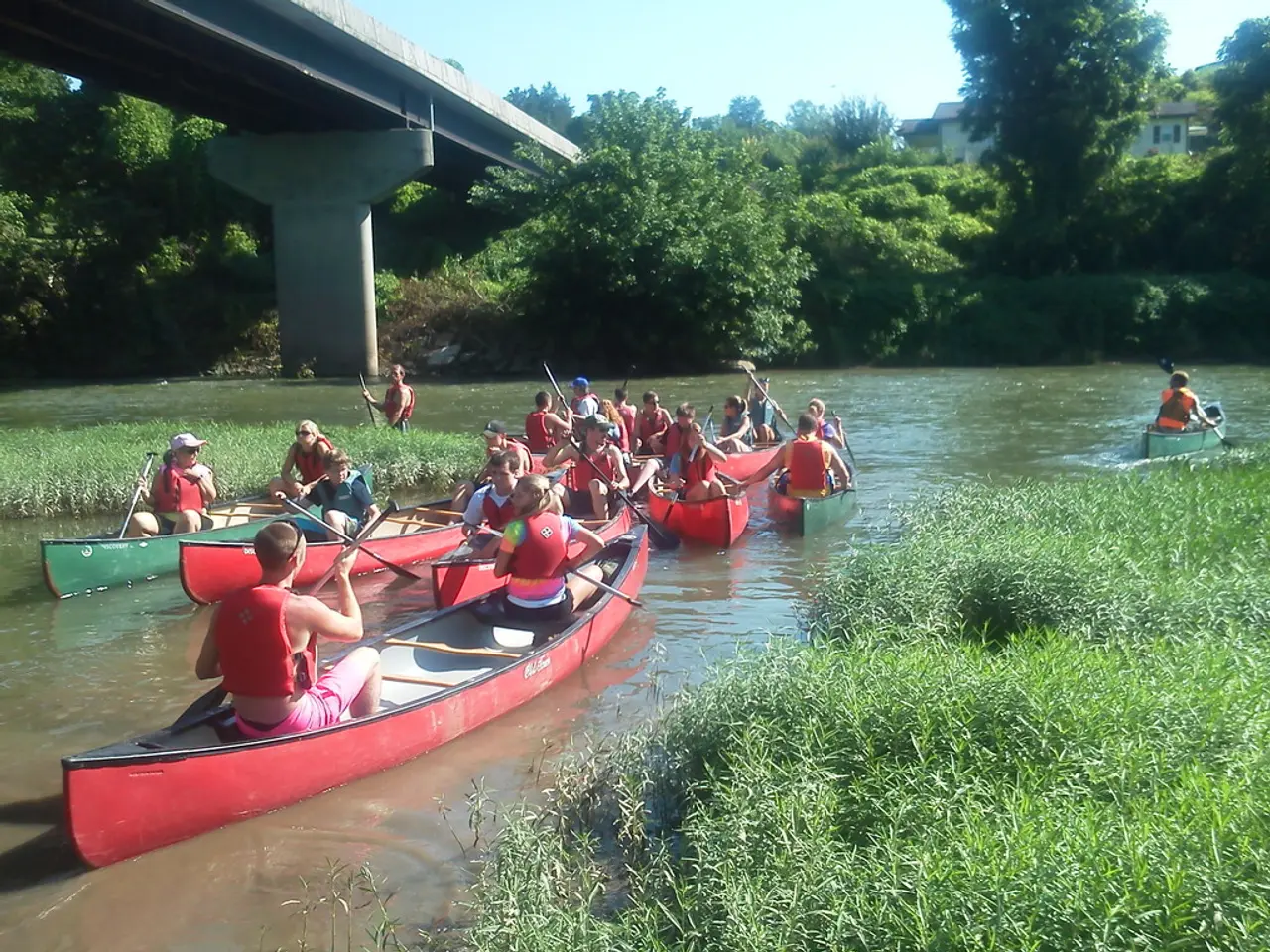European metropolis Paris submerges in the Seine: river swimming becomes commonplace in major cities
European cities are rediscovering the joy of urban swimming, with cleaner waterways and improved regulations making it safer and more accessible than ever before. From the historic reopening of rivers in Paris to new swimming areas in Rotterdam and Zurich, cities across the continent are embracing the trend.
For decades, swimming in the Spree River in Berlin has been prohibited due to concerns about safety and hygiene. However, this could soon change as hundreds of residents have recently demonstrated against the ban, calling for its reversal. Meanwhile, in Burgos, Spain, swimming in the city area of the river Arlazón is possible, offering locals a refreshing alternative to traditional pools.
In Hungary, the Hungarian amateur and professional long-distance swimming championship will take place on July 12th in a quieter arm of the Danube, near Szentendre. However, swimming in the Danube is limited due to it being an international waterway for freight and tourist ships. There are more than 20 areas where swimming is permitted in the Hungarian section of the Danube, ensuring safety and cleanliness for all swimmers.
The European bathing waters are subject to the Bathing Water Directive (BWD), which ensures water quality standards to protect health and the environment. In 2024, over 85% of EU bathing waters at nearly 22,000 locations were rated excellent, and 96% met at least minimum quality requirements. The European Commission continues to evaluate and enhance these regulations, aiming for consistent standards across all regions, improved health and environmental protections, and integration with broader water management frameworks.
For new urban swimming sites, such as the re-opened River Seine in Paris, water quality is rigorously tested to meet European regulations before allowing public swimming. During the 2024 Paris Olympics, extensive monitoring ensured the Seine was safe for competition, and public swimming areas now meet these standards regularly.
Paris, France, has opened three public swimming sites along the River Seine, including locations near Notre Dame Cathedral, the Eiffel Tower, and eastern Paris. Rotterdam, Netherlands, features a new urban swimming area in the harbor of Rijnhaven. Zurich, Bern, and Basel, Switzerland, maintain historic river baths that continue to serve swimmers and inspire new urban swimming initiatives like Berlin’s Flussbad project.
These examples reflect a broader European trend toward re-integrating swimming into urban waterways through regulatory frameworks ensuring water quality and infrastructure that supports safe, accessible swimming opportunities. The emphasis remains on health, environmental protection, and public engagement to foster vibrant, swimmable cities.
However, not all European rivers are suitable for swimming. Swimming in the Thames in most parts of London is banned and not recommended due to heavy pollution and tides. In most rivers that flow through Spanish cities, swimming is banned due to high pollution and boat traffic or dangerous currents. Swimming in the Tiber in Rome is banned due to its filthy and neglected condition, while jumping into the Tagus River in Lisbon, Portugal, and the Douro River in Porto is prohibited due to poor water quality.
In some cities, unconventional swimming experiences have emerged. In Amsterdam, swimming in the canals in the tourist center is not recommended due to the presence of boats. In Switzerland, it's popular to float down rivers on rubber tires, with exit points marked and the current being strong in some places, making it only recommended for experienced swimmers. The jumps from the bridge into the Neretva river in Mostar, Bosnia and Herzegovina, are a tourist attraction, but are only for the trained due to the risk involved.
Starting this Saturday, swimming in the Seine in Paris will be allowed for the first time in over 100 years, marking a significant milestone in the resurgence of urban swimming in Europe. As regulations continue to evolve and water quality improves, it's likely that more cities will follow suit, offering residents and visitors the opportunity to cool off in the heart of the city.
In line with this trend, the closed riverside swimming in Berlin could potentially be reopened in the future, following the public demand for a change in the ban. Meanwhile, adopting outdoor-living lifestyles, some home-and-garden enthusiasts might consider designing water features that comply with European safety and cleanliness regulations, bringing the joy of swimming closer to home.




